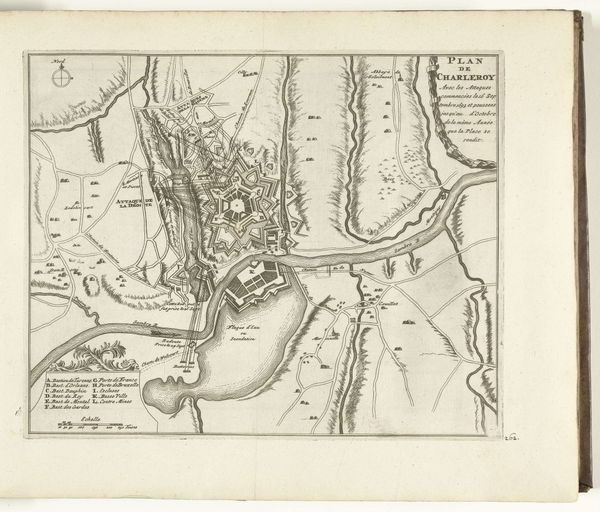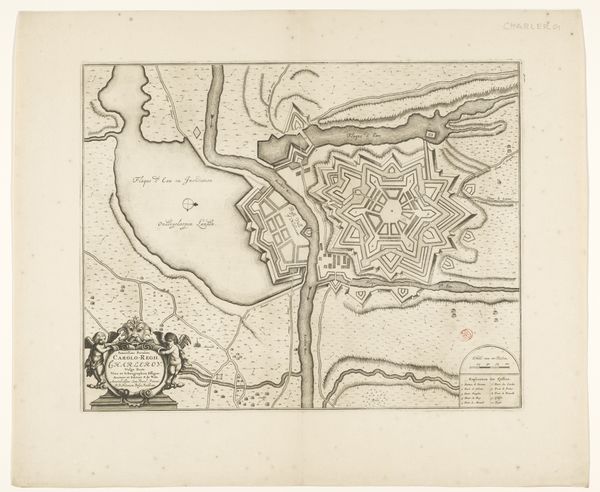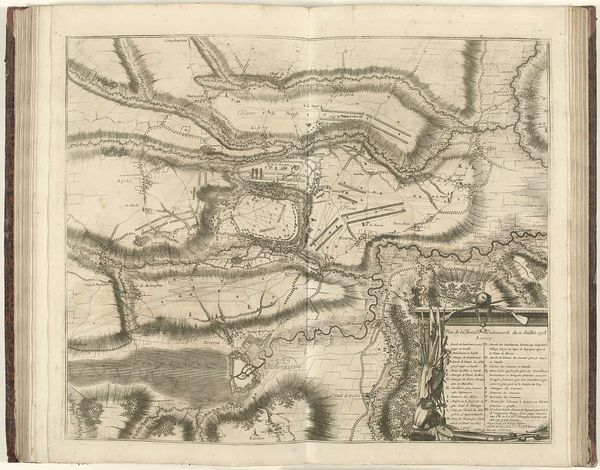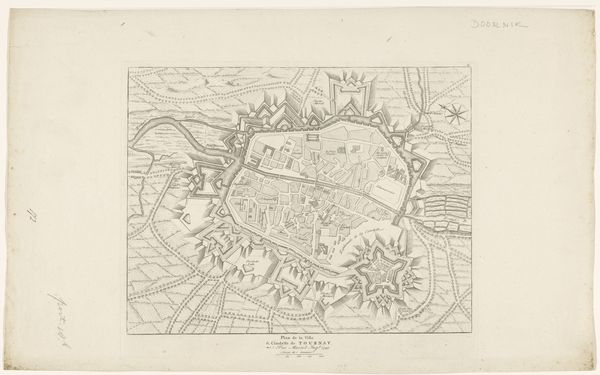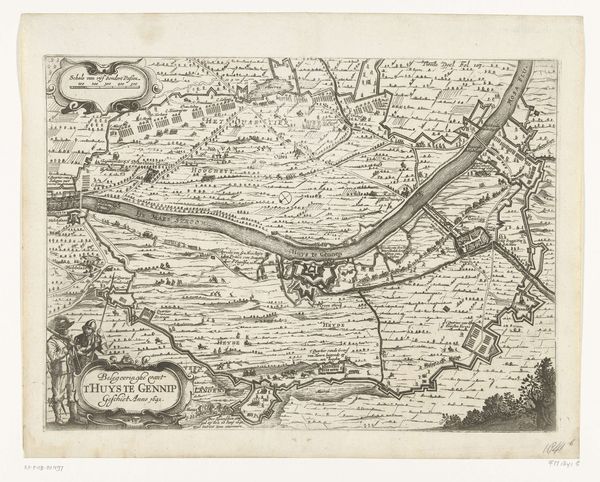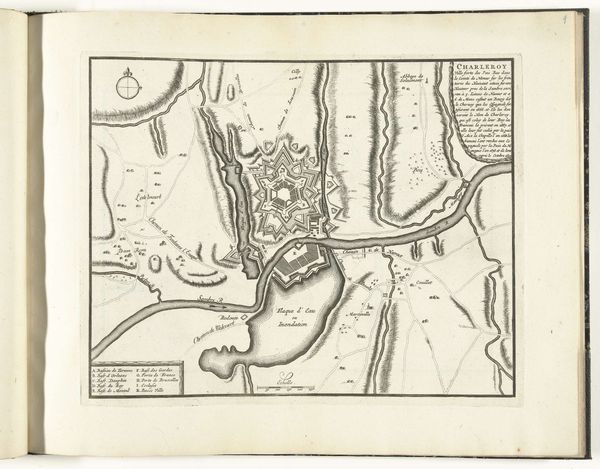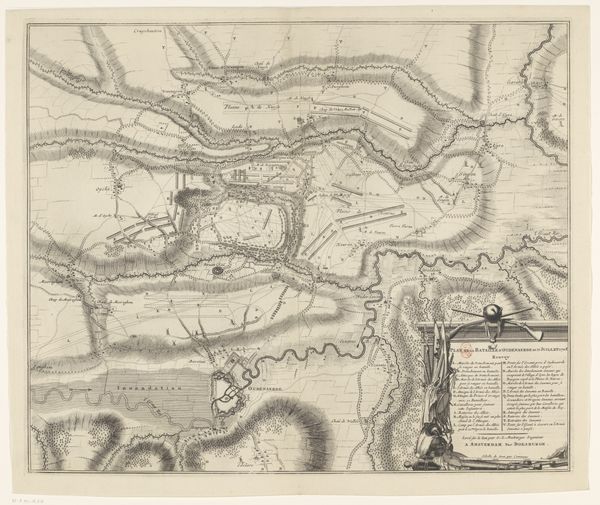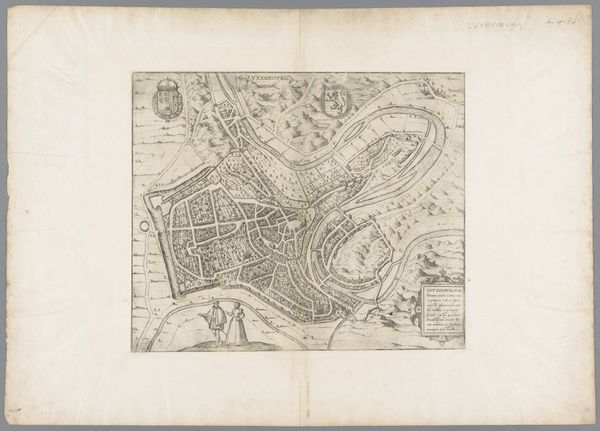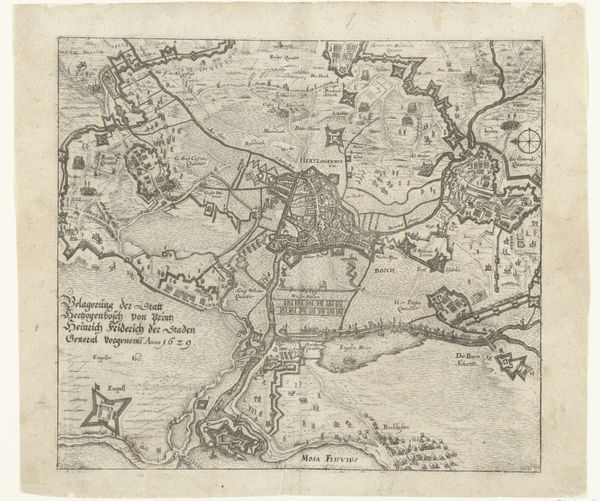
drawing, print, engraving
#
drawing
#
baroque
# print
#
pen sketch
#
cityscape
#
engraving
Dimensions: height 324 mm, width 479 mm
Copyright: Rijks Museum: Open Domain
This is Mademoiselle Rameau's 'Plattegrond van Namen,' a plan of Namur, etched with meticulous detail. The city, a nexus of terrestrial and aquatic routes, presents a compelling visual metaphor. The plan is bisected by rivers, arteries of commerce and conflict, mirroring the ancient symbolic dichotomy of water: life-giving and destructive. Cities, like Namur, are born at the confluence of rivers. This is a primal urge, a deep-seated instinct harking back to our earliest settlements. We see a similar pattern in the layout of ancient Mesopotamia, cradled between the Tigris and Euphrates. Namur’s walls are not just defensive structures; they are an assertion of order against the chaos of the natural world. They echo the walls of Jericho, a symbol of mankind’s eternal quest for security and permanence, yet forever vulnerable to siege. The plan, a symbol of mankind’s eternal quest for security, is not merely a map, but an emotional and psychological landscape, engaging us on a deep, subconscious level. This pattern of city planning and fortification, the eternal interplay between man and nature, resurfaces, evolves, and takes on new meanings in different historical contexts.
Comments
No comments
Be the first to comment and join the conversation on the ultimate creative platform.
